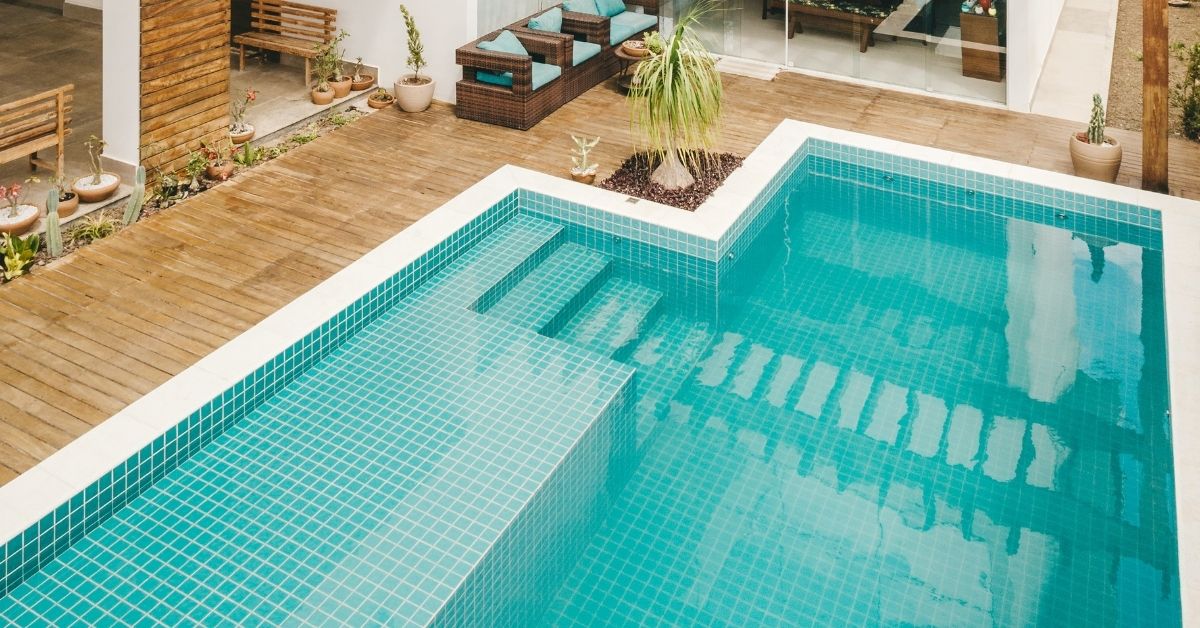When it comes to building a backyard pool, depth is an important factor. There is a lot of controversy about the average pool depth and in certain cases, each of the options will be true and it is very easy to explain.
There is no average pool depth to suit all pools. Swimming pool depth recommendations are based on its use. For children, a depth of 2 – 3 feet is required, if you prefer to swim 4 – 5 feet will suffice, and the minimum pool depth for a diving board is 10 feet or more.
Therefore, to determine what depth of the pool will be optimal, it is worthwhile to clearly define the scope of what it can be used for. It is not necessary to limit yourself to choosing only one option. You can create a pool suitable for children and divers alike.
Average Pool Depth in Different Pools
Based on such a variety, it is worth immediately determining what you would prefer to use your pool for. We suggest that you consider in detail all the popular pool options so that you have a detailed idea.
1. Children’s Pool Area
If you are planning a pool for children, the average pool depth will be 2-3 feet. This optimum depth will make children feel comfortable and safe in the water. Also, a pool of this depth is perfect for those who just like to lie down in the water.
If you have small children, you can also take care of creating separate niches around the main pool. Typically, these niches are 3-5 inches deep and are great for the smallest family members. This will allow them to be at a safe depth while being fenced off from the main pool.
2. Swimming Pool Depth Recommendations
One of the most common pool options is a swimming pool. The swimming pool depth recommendations are then 4 feet. This is the optimum depth at which you will not bump your feet on the bottom of the pool while swimming.
Plus, this depth allows you to safely finish your swim and get back on your feet anywhere in the pool. This can be very practical if you are very tired or have a cramp while swimming.
It should also be understood that for a comfortable swim, the pool must be made quite long. The recommended pool length, in this case, is 25 feet.
3. Minimum Pool Depth for a Diving Board
What could be better than on a hot summer day with a running jump into a cool pool? Undoubtedly, this can be enjoyed by both adults and children. But it is worthwhile to understand that due to the jump, the human body displaces a larger volume of water, which means that the depth of the pool should be greater.
The minimum pool depth for the diving board counts at 10 feet. This depth is enough to safely dive into the pool, even upside down, without fear of hitting the bottom. It is also worth remembering that 10 feet are the minimum depth for a diving pool. If you install a high springboard, then the depth of the pool will have to be increased accordingly.
If you love jumping from a high springboard and are seriously thinking about installing it at home, then you should turn to professionals for designing your pool. A swimming pool construction company will advise you on how best to bring your idea to life and what safety measures should be taken. This will apply to both the depth of the pool and other important factors.
Pool Designs with Different Depths

We have already decided that the average pool depth depends on what you will use it for. But as everyone understands perfectly well, in reality, you want the pool to be very functional and fit the desires of all family members. Therefore, at the planning stage of the pool, the architects calculate all the factors.
The most common option is pooling with varying depths. For example, this could be a swimming pool with a minimum swimming pool depth recommendation of 4 feet on one side and 10 feet on the other for setting up a diving board. But it should be understood that such a pool should be long enough since the recommended slope of the pool depth is 3 – 6%.
This will allow the pool to be used for both swimming and diving. In addition, for ease of sailing, on the deeper side, you can install a small ledge at a depth of 4 feet. This site will not interfere with jumping but will be useful when swimming if you want to take a break in the deeper part of the pool.
A children’s area can also be added to this pool. It is recommended that it is bordered by the shallower side. It is also worth taking care of the restrictive bumpers so that children cannot get into the deep part of the pool.
Another variation of a pool with varying depths can be a stepped pool. Unlike the first option, such a pool has sharp drops in depth. They consist of different levels and the average pool depth can vary from case to case. Such pools often have an unusual rounded shape, which looks very aesthetically pleasing.
How Pool Depth Affects Cost and Maintenance
When calculating the depth of the future pool, it is also worth noting that it will significantly affect the cost of construction and maintenance. First, a deeper pool is more difficult to build. Secondly, more water is required to fill and clean it. The same applies to heating the water in the pool, the larger the volume, the more electricity is consumed.
Therefore, when planning the construction of a new pool, it is worth making sure that its maintenance matches your budget. For example, adding a couple of extra feet of depth can cost you up to $ 1000 per year in maintenance.
Planning and Swimming Pool Depth Recommendations from Professionals
Pool installation professionals recommend a clear sequential action plan to determine which pool is right for the client. Let’s take a quick look at the main points from this plan to determine the average pool depth that is compatible with everyone’s needs.
The first thing to consider is the client’s preferences and what he will use the pool for. This information will help determine the required average pool depth for each part of the pool.
Another important factor is the size of the pool area. If you have a large backyard that will be used as a pool, then you can install a pool with a smooth change in depth. If the territory is limited or there is a personal desire of the client, then they think over the shape of the pool with a stepwise change in depth.
After planning these stages, all that remains is to build the pool and put it into operation. Remember that the construction of a pool is usually thought over for five or more years. In this case, if you are thinking over an area for small children, they will grow out of it very quickly, and perhaps you should think about how to use this part of the pool.






